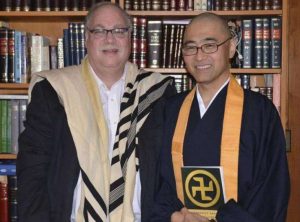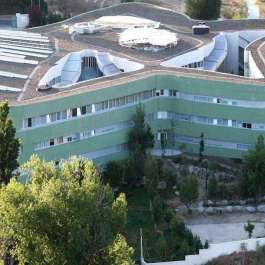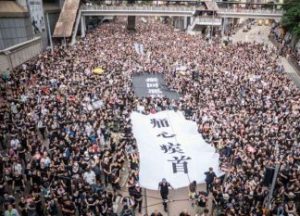The Buddha is renowned as an accomplished teacher, and his sole purpose was to propagate the truth of life as he understood it. The Ariyapariyesana Sutta of the Majjhima Nikaya (Collection of middle-length discourses) explicitly indicates that through the dissemination of his doctrine, he strove for the well-being of all living creatures. While it is apparent in the literature that the Buddha considered education to be a noble cause, he advocated teaching only what is necessary—in the Ambalatthika-rahulovada Sutta of the Majjhima Nikaya, he advises his son Rahula to learn only such matters as will be beneficial for the betterment of himself and society. In this regard, the Buddha considered discipline to be a prerequisite for education, which he viewed as a process in which parents, the clergy, and students should participate equally. This resulted in a tradition of education that produced the early Buddhist universities in India and the Pirivena institutes in Sri Lanka, which served both monastic and Buddhist lay students.
To achieve the levels of required discipline, the Pirivena students were placed directly under the head monk throughout their education. As dictated in the Vinaya Pitaka of the Tipitaka, monks are bound by 220 precepts, which include being awake before the head monk, cleaning the premises, taking care of the older monks, and generally conducting themselves respectably when interacting with both their fellow monks and ordinary members of society. The lay students were expected to behave and conduct themselves under the directions of the head monk. The teachers, on the other hand, were to guide the students with correct discipline and knowledge, as well as being sensitive to the students’ needs. For example, the Culagosinga Sutta of the Majjhima Nikaya states that the Buddha forbade teaching when a student was hungry. Such rules given by the Buddha himself are followed in the Pirivena system of education to this day.
Sri Lanka’s Pirivena system of education pre-dates the 16th-century missionary education introduced by the colonial invaders by around 1,400 years. The term “Pirivena” is the Sinhalese variant of the Pali word “Parivena,” which means the living quarters or the official residence of Buddhist monks—according to the Visuddhimagga (Path of purification), written in Sri Lanka by the Indian monk Buddhagosha in around 430, the term implies that the living quarters are “large-scale.” The Chinese monk-pilgrim Faxian (337–422) states in his travelogue that he visited the first Pirivenas of Sri Lanka—the Mahavihara and Abhayagirivihara, within the Kingdom of Anuradhapura (337 BCE–1017 CE)—and indicates that they housed around 3,000 and 5,000 Buddhist monks, respectively. These facts notwithstanding, Pirivena is primarily regarded as a tradition of education that is esteemed for its quality, its contribution to society, and its historical value.
The Pirivena tradition dates back to the 1st century CE, when the Mahavihara and Abhayagirivihara were commissioned through royal patronage. Other Pirivena institutes were created throughout the island during the rule of successive kings. The Sri Lankan rulers and the Sangha (monastic) community considered the education of both monks and lay people within a Buddhist society to be of utmost importance. The resulting Pirivena education significantly assisted in the propagation of Buddhism not only locally, but also overseas.
As Buddhism declined in India, Buddhist universities like Nalanda also deteriorated, and the traditional form of education soon died out there. However, despite numerous Indian invasions, Pirivena education prevailed in Sri Lanka over the centuries. The syllabus for both monastics and lay people was originally separated into two streams: the “Suta” part included such subjects as languages, religion, philosophy, history, economics, and geography, while the “Sippa” included skills such as agriculture, astrology, and carpentry. The system remained highly standardized and methodical, and was sought by visiting scholars from countries like Thailand, Cambodia, and Burma even as recently as the 15th century.
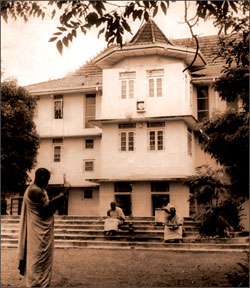
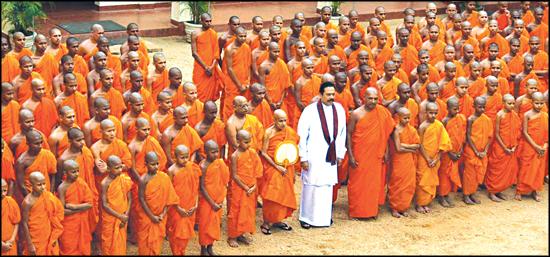
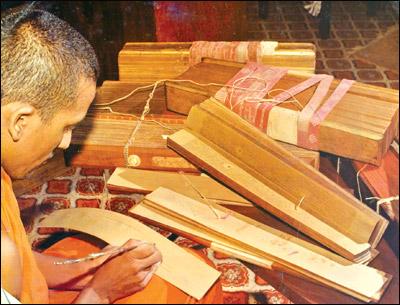

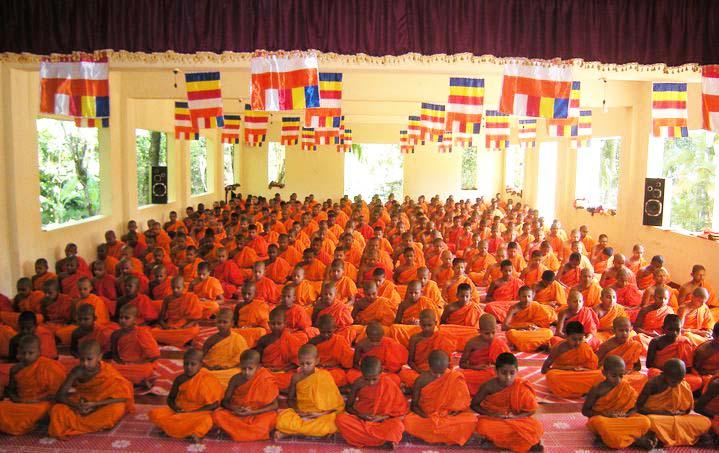
Sri Lanka was subject to colonial invasions from 1505 onwards, when the Portuguese arrived on the shores of the Kotte Kingdom (1415–1565). Following the conversion of King Dharmapala (r. 1551–97) to Christianity, the royal support for Buddhist education ceased. With the ensuing destruction of temples and Pirivena structures, together with the associated traditions, the Pirivena education system saw a rapid decline in Sri Lanka’s coastal areas. The Portuguese, Dutch, and English invasions resulted in a constant relocation of kingdoms within Sri Lanka, and this constant shift in the center of power led to the traditional Pirivena and Sangha residences being forced to move as well. However, the Pirivena education in the Kingdom of Kandy (1469–1815) continued to function as the region resisted the invasions until its fall to the British in 1815. Even at such times of upheaval, the Sangha community worked towards continuing the Pirivena system where possible.
Currently, there are three levels of Pirivena in Sri Lanka, serving both monks and lay people. At primary (mulika) level they offer five years of education, during which the students are taught six subjects—Pali, Sanskrit, Sinhala, English, Tipitaka studies and Mathematics—followed by an examination enabling them to study at the senior (maha) Pirivena. At the senior level the students continue the six subjects they studied at primary level, with additional studies in subjects like philosophy, the history of religions, linguistics, Ayurveda, and astrology. It is intended that with this advanced knowledge, the Pirivena students will be able to gain entrance to university-level Piriven institutes. The Piriven Vidyayathana, or affiliated higher educational Pirivenas, were first recognized by an act of Sri Lankan government in 1957, and in accordance with this act, in 1959 the Vidyodaya and Vidyalankara Pirivenas of Colombo were given university status. At present, there are 794 Pirivenas on the island, serving a student community of approximately 62,000.
The Pirivena system differs from mainstream education in its basic approach. The 362nd jataka tale (the jatakas are stories of the Buddha’s previous lives), the Silvaimansa Jataka, says that “a doubt had arisen in me as to which of the two, learning or discipline, is superior. I have no doubt that discipline itself is better that learning.”* The modern theory of education advocates that learning be applied before discipline is properly taught. However, knowledge placed in the wrong hands can produce disastrous results. As the Chinese diplomat and politician Wu Tingfang (1842–1922) said, “Education is like a double-edged sword. It may be turned to dangerous uses if it is not properly handled” (OECD 2007, 75). In such a context, the Pirivena system of education, in which discipline is an essential requirement, could perhaps serve as a model for modern education.
*Translation taken from the Daily News
References
Adhikari, A. 1993. Sri Lankawe sambhavya adhyapanaya ha maha sangana [The intellectual education of Sri Lanka and the Buddhist Sangha]. Colombo: Sri Dhara Publishers.
Bandaranayake, S. D. 2009. Sinhalese Monastic Architecture: The Viharas of Anuradhapura. New Delhi: Orient Blackswan.
Beal, Samuel. 2012. Travels of Fah-Hiean and Sung-Yun, Buddhist pilgrims, from China to India. New Delhi: Asian Educational Service.
International Buddhist College. 2014. History of Buddhist Education: Convocation Address by Professor Prasert Na Nagara, the First Chairman of IBC Council. Accessed 8 December 2014. http://ibc.ac.th/en/news/history-buddhist-education-convocation-address-professor-prasert-na-nagara-first-chairman-ibc.
Jothipala, G. 1988. Piriven adhyapanaye 100 wasaka maga salakunu [One hundred years of Piriven education]. Sri Lanka: Salinda Publishers.
OECD. 2007. Understanding the Social Outcomes of Learning. Paris: OECD Publishers. Accessed 8 December 2014. http://cappf.org.br/tiki-download_wiki_attachment.php?attId=306.
Wisadavet, W. The Buddhist Philosophy of Education: Approaches and Problems. Accessed 8 December 2014. http://www.stc.arts.chula.ac.th/CJBS/The%20Buddhist%20Philosophy%20of%20Education.pdf.




